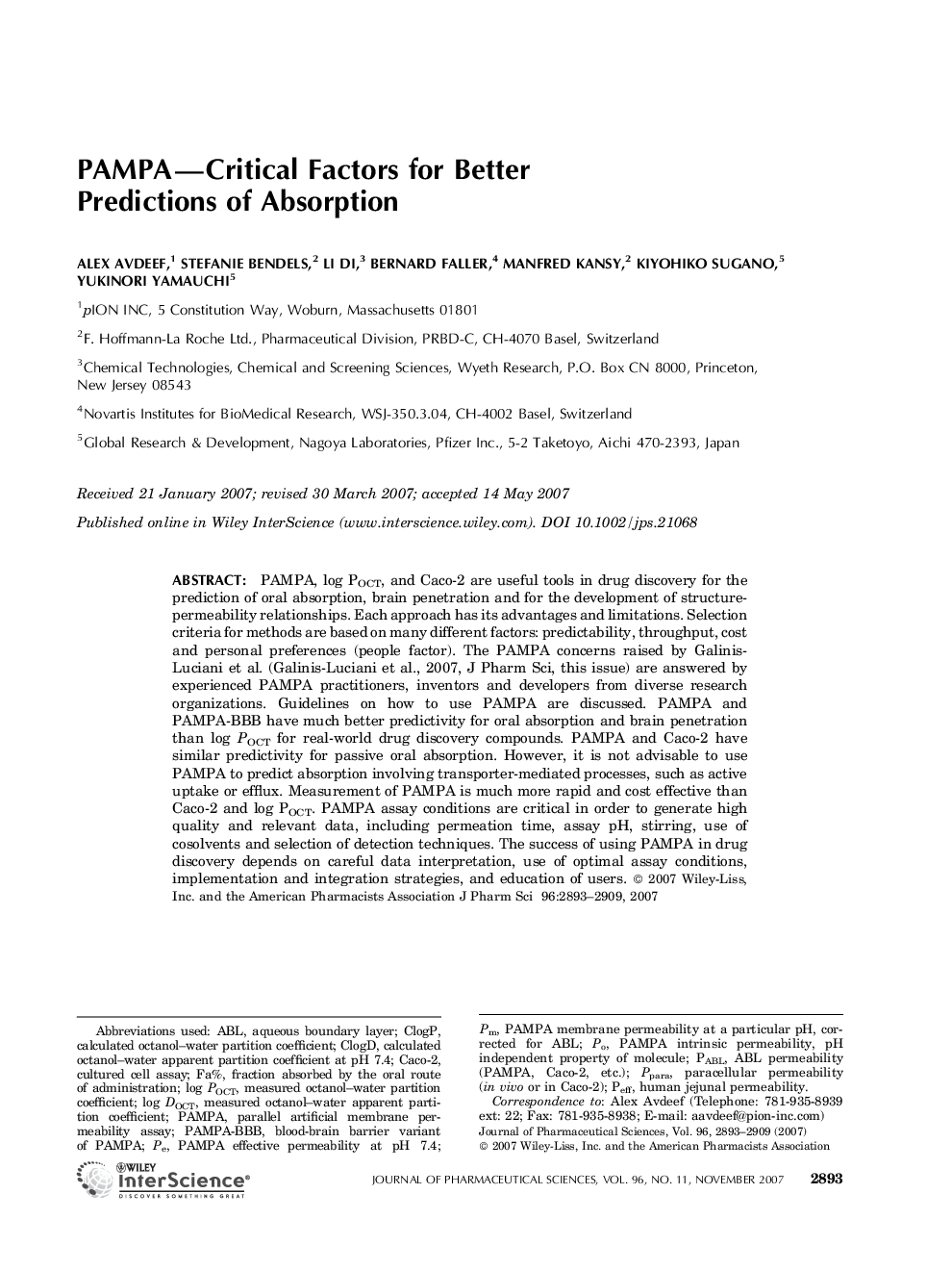| Article ID | Journal | Published Year | Pages | File Type |
|---|---|---|---|---|
| 2487720 | Journal of Pharmaceutical Sciences | 2007 | 17 Pages |
Abstract
PAMPA, log POCT, and Cacoâ2 are useful tools in drug discovery for the prediction of oral absorption, brain penetration and for the development of structureâpermeability relationships. Each approach has its advantages and limitations. Selection criteria for methods are based on many different factors: predictability, throughput, cost and personal preferences (people factor). The PAMPA concerns raised by GalinisâLuciani et al. (GalinisâLuciani et al., 2007, J Pharm Sci, this issue) are answered by experienced PAMPA practitioners, inventors and developers from diverse research organizations. Guidelines on how to use PAMPA are discussed. PAMPA and PAMPAâBBB have much better predictivity for oral absorption and brain penetration than log POCT for realâworld drug discovery compounds. PAMPA and Cacoâ2 have similar predictivity for passive oral absorption. However, it is not advisable to use PAMPA to predict absorption involving transporterâmediated processes, such as active uptake or efflux. Measurement of PAMPA is much more rapid and cost effective than Cacoâ2 and log POCT. PAMPA assay conditions are critical in order to generate high quality and relevant data, including permeation time, assay pH, stirring, use of cosolvents and selection of detection techniques. The success of using PAMPA in drug discovery depends on careful data interpretation, use of optimal assay conditions, implementation and integration strategies, and education of users. © 2007 WileyâLiss, Inc. and the American Pharmacists Association J Pharm Sci 96: 2893-2909, 2007
Related Topics
Health Sciences
Pharmacology, Toxicology and Pharmaceutical Science
Drug Discovery
Authors
Alex Avdeef, Stefanie Bendels, L.i. Di, Bernard Faller, Manfred Kansy, Kiyohiko Sugano, Yukinori Yamauchi,
